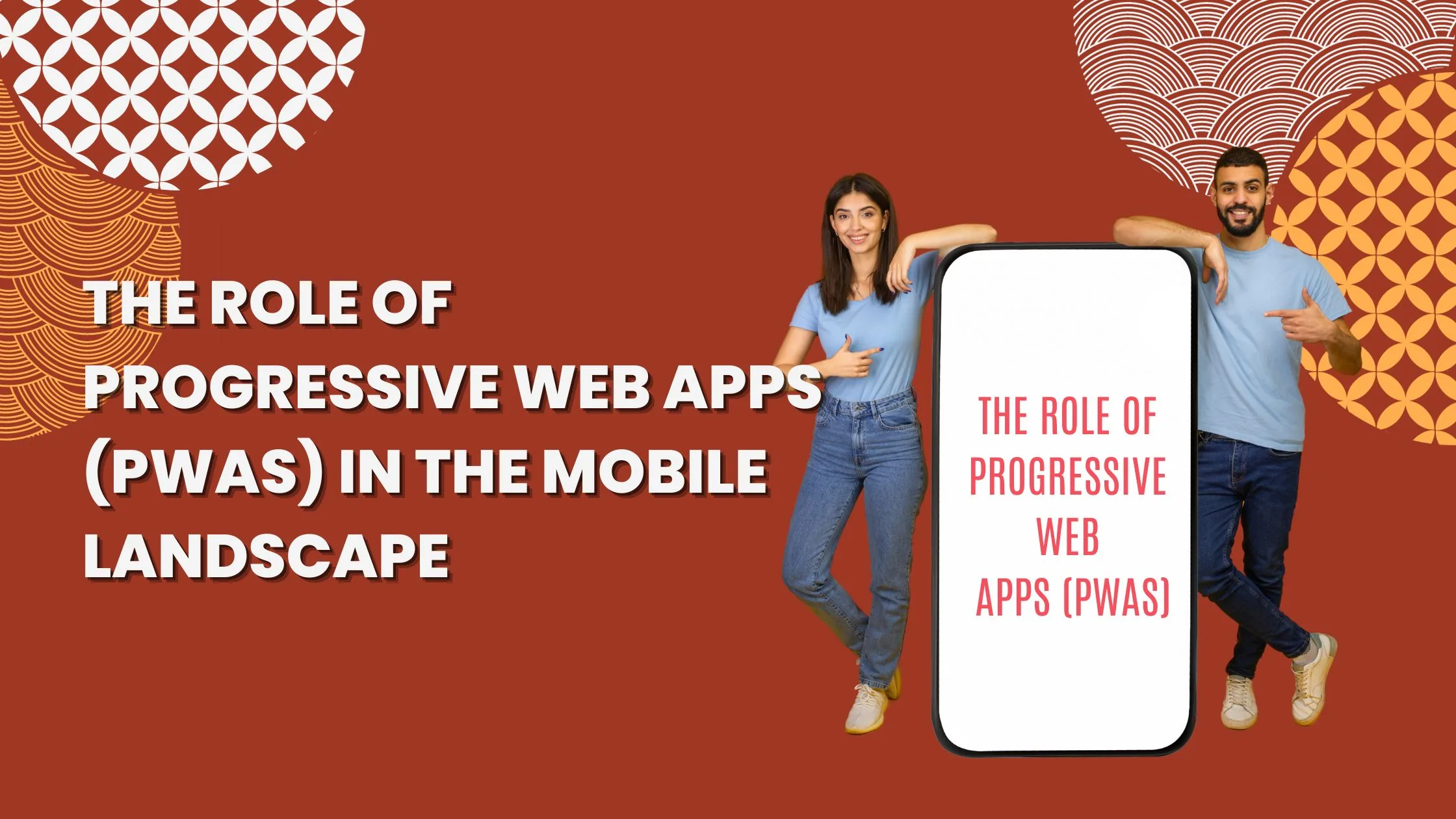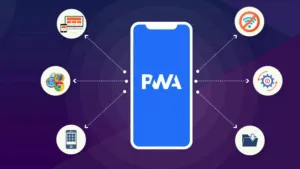The Role of Progressive Web Apps (PWAs) in the Mobile Landscape
Welcome to the future of mobile technology! Progressive Web Apps (PWAs) are taking the digital world by storm, revolutionizing the way we interact with websites on our smartphones. Gone are the days of slow-loading pages and limited functionality – PWAs combine the best features of both web and mobile applications, creating a seamless user experience like never before. In this blog post, we will delve into the role that PWAs play in today’s mobile landscape, exploring their benefits for businesses and users alike. So fasten your seatbelts as we explore this exciting new frontier together!
Introduction to Progressive Web Apps (PWAs)
Progressive Web Apps, or PWAs, are web applications that function like native apps but are built using web technologies such as HTML, CSS, and JavaScript. They offer the best of both worlds by combining the reach of a website with the user experience of a mobile application.
PWAs were first introduced by Google in 2015 as a way to bridge the gap between traditional websites and mobile apps. Since then, they have gained significant traction in the tech industry and have been adopted by major companies such as Twitter, Uber, and Starbucks.
How Do PWAs Work?
PWAs use modern web capabilities to provide users with an app-like experience on their devices. This is achieved through a set of technologies known as “progressive enhancement,” which allows them to adapt to different devices and browsers while still providing a consistent experience.
One of the key features of PWAs is their ability to work offline. This is made possible by caching data locally so that users can access it even without an internet connection. This not only improves user experience but also makes PWAs more reliable than traditional web apps.
Another important aspect of PWAs is their responsiveness. They are designed to be responsive across all devices, whether it’s a desktop computer or a smartphone. Users can access them from any device without compromising on functionality or design.
Definition and Purpose of PWAs
Progressive Web Apps (PWAs) are a relatively new concept in the world of web development, gaining popularity in recent years due to their ability to bridge the gap between native mobile apps and traditional websites. But what exactly are PWAs and what purpose do they serve? In this section, we will delve into the definition and purpose of PWAs.
Definition of PWAs:
A Progressive Web App is essentially a website that has been designed to function like a native mobile app. It combines the best features of both worlds – the reach and accessibility of a website with the user experience and functionality of a native app. According to Google, PWAs are “reliable, fast, and engaging web experiences that feel like native apps.”
One key feature of PWAs is their ability to work offline or on low-quality networks. This is made possible through service workers, which are scripts that can intercept network requests and cache essential resources so that users can still access content even without an internet connection. This makes them particularly useful for users who have limited internet access or those who frequently travel to areas with poor network coverage.
Purpose of PWAs:
The primary purpose of Progressive Web Apps is to provide an enhanced user experience on mobile devices. With more people accessing the internet through their smartphones than ever before, it has become crucial for businesses to optimize their websites for smaller screens. However, creating a separate native app for each operating system (iOS, Android) can be time-consuming and expensive.
Benefits of PWAs for Mobile Users
Progressive Web Apps (PWAs) have been gaining popularity in the mobile landscape due to their numerous benefits for mobile users. In this section, we will explore some of the key advantages of PWAs that make them a preferred choice for users.
1. Offline Functionality:
One of the biggest advantages of PWAs is their ability to function offline. Unlike traditional websites or native apps, PWAs can still be accessed and used without an internet connection. This makes them ideal for users who have limited or no internet access, such as when traveling in remote areas or on flights with no WiFi. Additionally, this feature also allows users to save data usage and reduce loading times.
2. Fast Loading Speeds:
PWAs are designed to deliver a fast and seamless user experience, even on slower networks. They use service workers – a type of web technology – that enables them to load instantly, regardless of network conditions. This means that users do not have to wait for large files or heavy graphics to load before accessing the app’s content.
3. Lower Data Usage:
Unlike native apps that need to be downloaded onto a device, PWAs run on browsers which require significantly less storage space and consume less data. This is especially beneficial for users who have limited data plans or live in areas with slow internet speeds.
Advantages of PWAs for Businesses
There are several advantages that Progressive Web Apps (PWAs) offer for businesses, making them a valuable tool in the ever-changing mobile landscape. In this section, we will discuss these advantages in detail and how they can benefit businesses.
1. Improved User Experience:
One of the biggest advantages of PWAs for businesses is the improved user experience it provides to customers. PWAs use modern web technologies such as HTML, CSS, and JavaScript to create an app-like experience on any device, be it a mobile phone or a desktop computer. This eliminates the need for users to download and install native apps from app stores, saving storage space on their devices. With fast loading times and smooth navigation, PWAs offer a seamless experience to users, resulting in increased engagement and customer satisfaction.
2. Increased Reach:
Another significant advantage of PWAs is their ability to reach a wider audience compared to native apps. Since PWA’s function as websites, they can be accessed by anyone with an internet connection through a URL without having to go through an app store approval process. This means that businesses can reach potential customers who may not have access to app stores or have limited storage space on their devices.
3. Cost-Effective:
Building a native app from scratch can be expensive for businesses, especially small ones with limited budgets. On the other hand, developing a PWA is comparatively cost-effective since it uses existing web technologies instead of requiring specialized developers for each platform (iOS or Android).
Implementation and Development of a PWA
Progressive Web Apps (PWAs) have gained significant popularity in recent years as a modern approach to building mobile applications. They offer users a seamless experience by combining the best features of both native apps and web pages. In this section, we will delve into the implementation and development process of PWAs.
The first step in developing a PWA is to ensure that your website is optimized for mobile devices. This includes making sure that your website has a responsive design, which means it can adapt to different screen sizes and orientations. This is crucial as PWAs are designed to work on any device, whether it’s a smartphone, tablet or desktop.
Next, you need to incorporate service workers into your website. Service workers are JavaScript files that run in the background and enable PWAs to work offline. They also help with caching resources such as HTML, CSS, and images so that they can be loaded quickly when the user revisits the app.
After setting up the basic infrastructure for your PWA, you can start implementing some key features such as push notifications, home screen installation prompts, background sync, etc. These features enhance the user experience by making it more similar to native apps.
Case Studies: Successful PWA Examples
Progressive Web Apps (PWAs) have gained immense popularity in recent years as they offer a seamless, app-like experience to users on any device. Many businesses and organizations have already taken advantage of the features and benefits offered by PWAs, resulting in increased user engagement, customer retention, and revenue growth. In this section, we will take a closer look at some successful PWA examples from various industries.
1. Twitter Lite:
Twitter is one of the biggest social media platforms with over 330 million monthly active users. In April 2017, Twitter launched its PWA version called “Twitter Lite” for mobile users in emerging markets with limited internet access or low-end devices. This PWA has significantly improved user engagement and reduced data usage by 70%. It loads quickly even on slow networks and offers push notifications for new tweets.
2. Starbucks:
Starbucks launched its PWA in 2017 to improve its mobile ordering experience for customers. The PWA enables customers to order ahead and skip long queues at their nearest store. It also allows users to customize their orders and save their favorite items for future purchases. Since implementing the PWA, Starbucks has seen an increase in sales through mobile orders by more than 50%.
Challenges and Limitations of PWAs
- Limited Access to Device Features: One of the primary challenges faced by PWAs is the restricted access to certain device features. Unlike native apps, PWAs may encounter limitations in utilizing functionalities such as Bluetooth, NFC, and advanced camera controls. This can impact the app’s ability to deliver a comprehensive user experience, especially in domains that heavily rely on these features.
- iOS Limitations: Apple’s iOS, although supportive of PWAs, presents its own set of limitations. iOS imposes restrictions on background processes, limiting the effectiveness of certain PWA features. Additionally, PWAs on iOS may not fully harness the potential of push notifications, which could impact user engagement.
- Dependency on Browser Support: PWAs heavily rely on browser compatibility and support for their optimal functioning. While major browsers have embraced PWA standards, discrepancies in feature support and implementation across different browsers can pose challenges for developers, leading to inconsistencies in user experiences.
- Limited App Store Visibility: Unlike native apps that benefit from visibility within app stores, PWAs often struggle to gain recognition. This limitation can impact the discoverability of PWAs, hindering their adoption rates and potential for widespread use.
Future Outlook for PWAs in the Mobile Landscape
- Advancements in Browser Capabilities: As browsers continue to evolve, we can anticipate increased support for PWA features and standards. This will likely address many of the challenges related to browser compatibility, enabling developers to create more consistent and robust PWAs.
- Platform-Specific Enhancements: With ongoing updates to operating systems and browsers, there is potential for platform-specific enhancements that address the limitations faced by PWAs on iOS and other platforms. This could lead to a more level playing field for PWAs in terms of functionality and user experience.
- Growing Developer Community: The PWA developer community is expanding rapidly, fostering collaboration and knowledge-sharing. As more developers contribute to the PWA ecosystem, innovative solutions to current challenges are likely to emerge, paving the way for a more refined and versatile PWA landscape.
Conclusion:
While PWAs face certain challenges and limitations, their future in the mobile landscape appears promising. The ongoing advancements in browser capabilities, platform-specific enhancements, and the growing developer community are paving the way for PWAs to become a dominant force in mobile technology. As the industry continues to evolve, the agility, speed, and seamless user experiences offered by PWAs position them as a key player in shaping the future of mobile applications. Embracing PWAs is not just a trend but a strategic move towards a more inclusive and dynamic mobile ecosystem.
 Previous post
Building a RESTful API: A Step-by-Step Guide
Previous post
Building a RESTful API: A Step-by-Step Guide




